1973 Cadillac Sedan de Ville: Red Sled

I’ve always loved the big 1971–76 Cadillacs. They were the last of the truly giant Caddys. In 1977, all the GM C-body cars, including the Sedan de Ville, Coupe de Ville and Fleetwood Brougham/Fleetwood limo, would be downsized. The Eldorado coupe would remain large and in charge for two more model years, until it was finally re-sized in 1979.
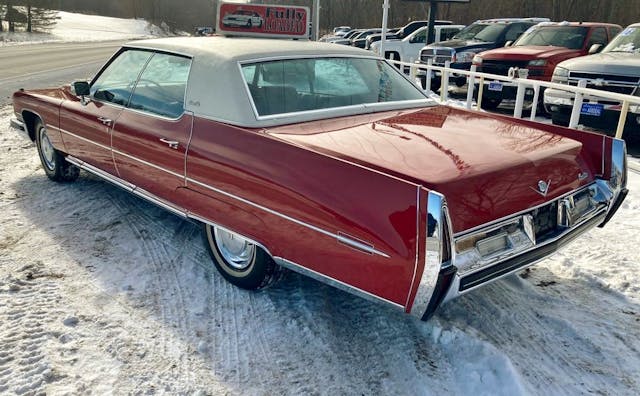
How did I get so stuck on these cars? I think it’s because when I was still pretty little, my mom and dad bought me Pocket Cars, and two of them were the ’75 Fleetwood Brougham and a Fleetwood-based ambulance. Later on, License to Drive came out, featuring an Adriatic Turquoise ’72 Sedan de Ville prominently. I probably watched that movie 20 times when it was shown on cable and was always smitten—and horrified at what happened to that car by the end of the movie. Poor Caddy.
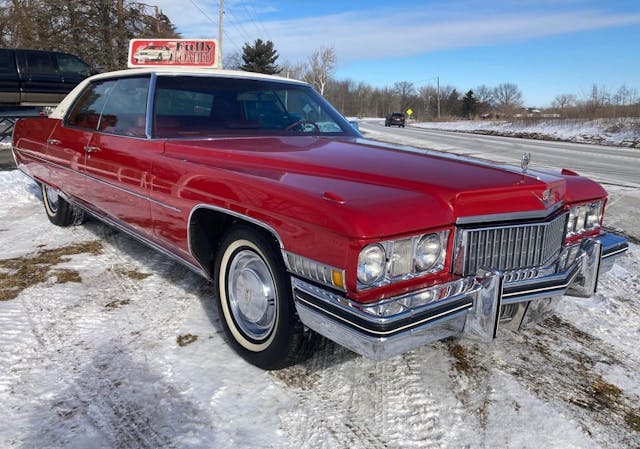
The 1971–72 Cadillacs changed very little, mostly in small details like grille texture and taillight lenses. For 1973, the 5-mph bumper was required, resulting in a “blockier” front end. The rear bumper was redesigned, as well, with smaller backup lights riding higher up than in ’72. A new grille and restyled seats and door panels rounded out (squared up?) the changes.
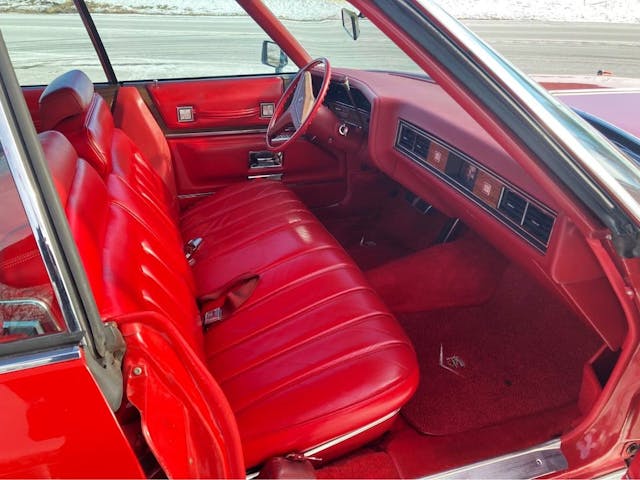
The ’73 Cadillacs were presented to dealers on September 21, 1972. The early ’70s were good times for Cadillac dealers. While the cars were perhaps not quite as exclusive as they had been in the ’60s, they were still generally considered the “you made it” vehicle of choice, and welcome in front of country clubs, supper clubs, and nightclubs all over the U.S.

Indeed, 1973 was a very good year for Cadillac. They set a production record of 304,839 cars sold for the model year. An Eldorado convertible paced the Indy 500 that May. And if that wasn’t enough, the five-millionth Cadillac was built in ’73 as, well, a blue Sedan de Ville.
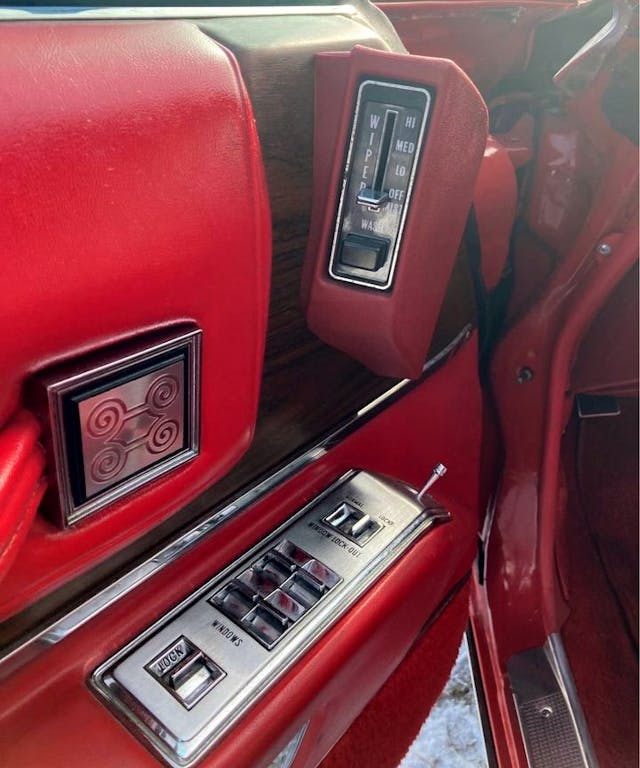
The 1973 Sedan de Ville had a base price of $6500 and weighed in at 4985 pounds. A total of 103,394 were built for the model year. Compared to the entry-level Calais coupe and sedan, de Villes had extra exterior chrome, including rocker panel trim, nicer seats and door panels, a standard power front seat, and rear fold-down arm rest. And the Coupe de Ville/Sedan de Ville was the volume seller; only about 8000 Calais models were built.

The Sedan de Ville rode a 130-inch wheelbase and had an overall length of 231 inches. Although these were luxury cars and very servicable with their standard equipment, there was a long option list, as you’d expect. Among the niceties were Soft Ray tinted glass, Automatic Temperature Control, cruise control, Firemist paint, tilt/telescope steering wheel, and myriad stereo options, including AM/FM with signal-seeking and an 8-track player.
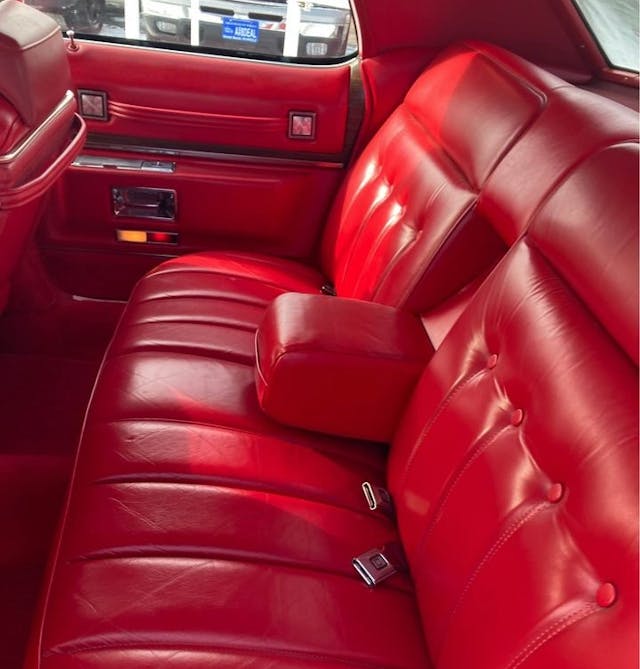
This particualar Sedan de Ville was seen on Marketplace back in February and was located in Michigan City, Indiana. According to the ad, it had only 27,414 miles on it at the time. Normally I’m very skeptical about mileage on cars old enough to have only a five-digit odometer. “Only 42,000 miles!” an ad might claim on, say, a 1985 Oldsmobile Delta 88. Then I’ll look at the pictures, and see the faded paint and worn upholstery and assume that it’s actually 142,000 miles, and the odometer has rolled over. I see this far too often on car ads online. Whether it’s an honest mistake or a bit of flim-flammery on the part of the seller, I’ll let you decide.
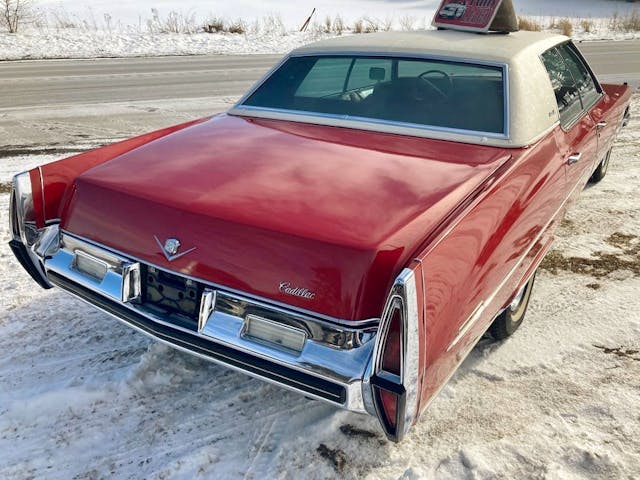
But in this car’s case, I think the mileage might be correct. It looks extremely nice, outside and inside. Those padded door panels, seen on 1973–76 Cadillacs, were very prone to sunlight damage, fading, the whole nine yards. Ditto for the arm rests built into the door panels. And with its bold Dynasty Red paint with bright red leather, any fading would be easily seen. The ask for this very nice, very red Nimitz-class ’70s luxocruiser was just shy of 20 grand. A lot for a ’70s car, but over the past few years I have some of these final giant Cadillacs going for healthier and healthier money.

Despite its nice condition, it does have an issue many ’70s Cadillacs surviving to the present day are afflicted with: Double Hood Ornament Syndrome. You see, the first Cadillac with a stand-up hood ornament was the 1971 Eldorado. All other Cadillacs had a wreath and crest, or “V” and crest, on the leading edge of the hood. But many owners really were smitten with that stand-up hood ornament, and many de Villes and Fleetwoods had them added on by dealers, even when new. Which has happened to this car. Perhaps not a big deal to some folks, but it always has ground my gears a little.

At any rate, a pretty survivor. Dynasty Red, being such a bold, bright color, was more common on Eldorados and Coupe de Villes than the four door models. But it looks great, and hopefully it has found a good home by now!

